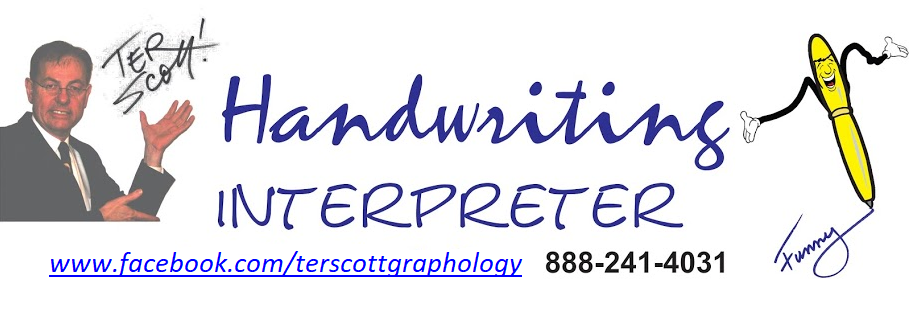There are many books on how to do handwriting analysis; this is different, it’s about how to get the most out of your time with your graphologist and the writing specimen you deliver to be analyzed.
Most of the people of which I do handwriting readings don’t want to become professional handwriting experts, but desire to know more about themselves. They are intrigued to know that their handwriting can reveal so many things about them; things about their past, present and even future. Things that once they are made aware, can be altered and improved upon to bring about the outcome they desire.
Much like preparation to doctor visit or a personal interview, your analysis is only as good as the specimen you provide. Our time together here will help you in getting the most from your readings by understanding what a graphologist needs to do a proper reading, looks at, and how it is interpreted. Every graphologist has their own perspective and I can only share from mine, however many things are consistent with most and I will offer these and let you know when my opinion may differ.
When you thrust your handwritten paper in front of your graphologist and ask “What do you think”, you are doing some things correctly but this technique could be improved upon. As a graphic designer and instructor of graphic design, I encourage my students to do exactly that when getting the opinion of others with a draft of a brochure or logo they are working on. By stating it in this way, we are asking the person to think, but also we are not specifically asking them about the elements we want them to think about. There are many elements that make up the brochure such as layout, photos, color and so on. By asking in this way we are not directing them and their response will reveal the first thing that “stands” out such as the color, the texture of the paper, the photos, size or anything else.
Their answer of course depends on so many variables that I could fill this page detailing each category: his/her age, experience, likes, knowledge about design, the subject matter and more. Any first answer given is great because it is their overall impression and that is what we as designers want to know. The things that are revealed from beneath this main “umbrella” offer more detail; and you should wait for these without any solicitation on your part. Prompt only with the nodding of the head and a few “a huhs” in places to encourage the person to continue. When the answers stop coming or slow down, as the person’s face gestures that he or she is asking “is this what you wanted?” then you can “direct” the person with you “leading” questions. Here you can ask more questions when appropriate. You are the detective, asking the questions for answers you desire to know: what paper stock should I use, what color, should more photos, less photos, or different photos be used?
Now of course this is not an interrogation. You need to respect the other person’s time, critique and know too that much of the information beyond the first few answers decreases in validity.
This is probably far too much of an explanation as to how to “ask” for someone’s opinion on something but essentially this is how I like to get an honest and unbiased reaction to a graphic design project. From that, I may ask someone else who I know has a different perspective from those mentioned earlier: age, experience, likes, knowledge about design fundamentals and the subject matter.
When a graphologist first looks at your writing specimen, there will be one overall impression. Then your reader will dissect it further, sometimes depending on the importance of the client (such as in forensics) a magnifying glass may be used and days of continued review required to present the actual findings. Obviously most readings will not require or offer such an in depth study.
So, when you present your writing specimen, wait patiently and listen intently as your analysis is presented to you. I usually have pen or highlighter in hand and mark things as I circle and speak to my client. This can go fast as I usually have a line of others waiting to have their readings, but I make it fun and worthwhile to each person who has their handwriting secrets revealed!
